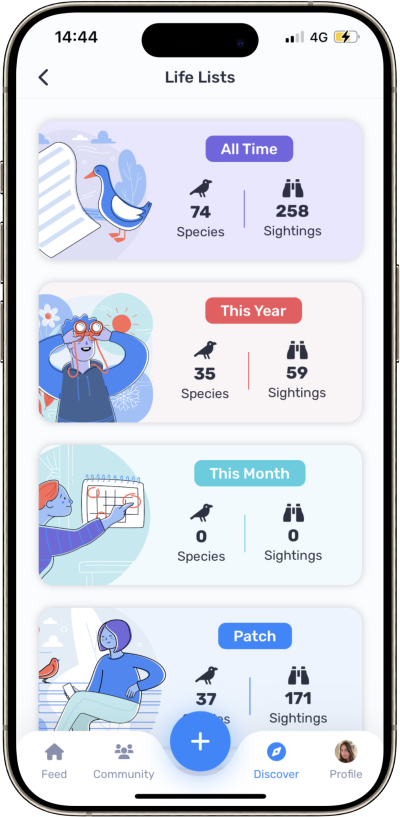loading...
Honeyeaters
The honeyeaters, belonging to the family Meliphagidae, are a varied group of small to medium-sized birds that include the Australian chats, myzomelas, friarbirds, wattlebirds, miners, and melidectes. With 186 species spread across 55 genera, they are typically found in Australia, New Guinea, New Zealand, the Pacific islands up to Samoa and Tonga, and Wallacea to the northwest of New Guinea. They form the superfamily Meliphagoidea with their closest relatives and are essential for the pollination of various Australasian plants. Honeyeaters have diverse diets ranging from nectar, insects, and fruit and are known for their unique, brush-tipped tongues for feeding. Although many are not well understood in terms of movement, they tend to travel in response to food plant flowering, especially in arid zones. Recent taxonomy adjustments have seen some species like the golden and Bonin honeyeaters reclassified to Zosteropidae, while the New Zealand stitchbird moved to its own family, Notiomystidae. The "MacGregor's bird-of-paradise" has been reidentified as "MacGregor's honeyeater" within this family. The newly discovered wattled smoky honeyeater and the extinct Moho and Chaetoptila genera, endemic to Hawaii, have stirred up discussions about family classifications, with the latter proposed to belong to a separate family, the Mohoidae.
Regions
Categories
All
Accentors
African & Green Broadbills
Albatrosses
Alcippe Fulvettas
Anhingas, Darters
Asian Barbets
Auks
Austral Storm Petrels
Australasian Babblers
Australasian Robins
Australasian Warblers
Australasian Wrens
Australo-Papuan Bellbirds
Babblers, Scimitar Babblers
Barn Owls
Bee-eaters
Birds-of-paradise
Boatbills
Bristlehead
Bulbuls
Buntings
Bushtits
Bustards
Buttonquail
Caracaras, Falcons
Cassowaries, Emu
Cettia Bush Warblers & Allies
Chats, Old World Flycatchers
Cisticolas & Allies
Cockatoos
Cormorants, Shags
Coursers, Pratincoles
Crab-plover
Cranes
Crombecs, African Warblers
Crows, Jays
Cuckoos
Cuckooshrikes
Cupwings
Dippers
Drongos
Ducks, Geese, Swans
Elachura
Fairy Flycatchers
Fairy-bluebirds
Fantails
Figbirds, Orioles, Turnagra
Finches, Euphonias
Finfoots
Flamingos
Flowerpeckers
Flufftails
Frigatebirds
Frogmouths
Gannets, Boobies
Goldcrests, Kinglets
Grassbirds & Allies
Grebes
Ground Babblers
Gulls, Terns, Skimmers
Herons, Bitterns
Honeyeaters
Honeyguides
Hoopoes
Hornbills
Hylocitrea
Ibisbill
Ibises, Spoonbills
Ifrit
Indigobirds, Whydahs
Ioras
Jacanas
Jewel-babblers, Quail-thrushes
Kingfishers
Kites, Hawks, Eagles
Larks
Laughingthrushes & Allies
Leaf Warblers & Allies
Leafbirds
Longspurs, Snow Buntings
Magpie Goose
Megapodes
Melampittas
Monarchs
Mottled Berryhunter
Nightjars
Northern Storm Petrels
Nuthatches
Old World Parrots
Old World Sparrows, Snowfinches
Ospreys
Owls
Oystercatchers
Painted-snipes
Parrotbills & Allies
Pelicans
Penduline Tits
Petrels, Shearwaters, Diving Petrels
Pheasants & Allies
Pigeons, Doves
Pittas
Ploughbill
Plovers
Rail-babbler
Rails, Crakes & Coots
Reed Warblers & Allies
Rollers
Sandpipers, Snipes
Shrikes
Sittellas
Skuas
Starlings, Rhabdornis
Stilts, Avocets
Stone-curlews, Thick-knees
Storks
Sunbirds
Swallows, Martins
Swifts
Sylviid Babblers
Thrushes
Tits, Chickadees
Treecreepers
Treeswifts
Trogons
Tropicbirds
Typical Broadbills
Vangas & Allies
Vireos, Greenlets, Shrike-babblers
Wagtails, Pipits
Wallcreeper
Waxbills, Munias & Allies
Waxwings
Weavers, Widowbirds
Whipbirds
Whistlers & Allies
White-eyes
Woodpeckers
Woodswallows, Butcherbirds & Allies
Wrens
Jayshrike
Rufous-banded Honeyeater
Conopophila albogularis
Rufous-sided Honeyeater
Ptiloprora erythropleura
Scaly-breasted Honeyeater
Lichmera squamata
Scaly-crowned Honeyeater
Sugomel lombokius
Scrub Honeyeater
Microptilotis albonotatus
Seram Friarbird
Philemon subcorniculatus
Seram Honeyeater
Lichmera monticola
Short-bearded Honeyeater
Melionyx nouhuysi
Silver-eared Honeyeater
Lichmera alboauricularis
Sooty Honeyeater
Melionyx fuscus
Spotted Honeyeater
Xanthotis polygrammus
Streak-breasted Honeyeater
Territornis reticulata
Streak-headed Honeyeater
Pycnopygius stictocephalus
Sulawesi Myzomela
Myzomela chloroptera
Sumba Myzomela
Myzomela dammermani
Tanimbar Friarbird
Philemon plumigenis
Tawny-breasted Honeyeater
Xanthotis flaviventer
Tawny Straightbill
Timeliopsis griseigula
Timor Friarbird
Philemon inornatus
Varied Honeyeater
Gavicalis versicolor
Vogelkop Melidectes
Melidectes leucostephes
Wakolo Myzomela
Myzomela wakoloensis
Wattled Smoky Honeyeater
Melipotes carolae
Wetar Myzomela
Myzomela kuehni
White-eared Myza
Myza sarasinorum
White-streaked Friarbird
Melitograis gilolensis

White-throated Honeyeater
Melithreptus albogularis
Yellow-browed Melidectes
Melidectes rufocrissalis
Yellow-gaped Honeyeater
Microptilotis flavirictus
Yellowish-streaked Honeyeater
Ptiloprora meekiana
Your birdwatching journey like never before
Connect with nature in minutes
Take a walk, look out of the window and log the birds that you see. Feel good about those little connections to nature.
Discover the joy of birding
Find new birding spots, see more birds, share and celebrate with a like-minded community of nature lovers.
Play your part in saving nature
Logging your birding sightings and sessions turns into positive action for our planet. Every sighting counts.
Species Categories
AccentorsAfrican & Green BroadbillsAlbatrossesAlcippe FulvettasAnhingas, DartersAsian BarbetsAuksAustral Storm PetrelsAustralasian BabblersAustralasian RobinsAustralasian WarblersAustralasian WrensAustralo-Papuan BellbirdsBabblers, Scimitar BabblersBarn OwlsBee-eatersBirds-of-paradiseBoatbillsBristleheadBulbulsBuntingsBushtitsBustardsButtonquailCaracaras, FalconsCassowaries, EmuCettia Bush Warblers & AlliesChats, Old World FlycatchersCisticolas & AlliesCockatoosCormorants, ShagsCoursers, PratincolesCrab-ploverCranesCrombecs, African WarblersCrows, JaysCuckoosCuckooshrikesCupwingsDippersDrongosDucks, Geese, SwansElachuraFairy FlycatchersFairy-bluebirdsFantailsFigbirds, Orioles, TurnagraFinches, EuphoniasFinfootsFlamingosFlowerpeckersFlufftailsFrigatebirdsFrogmouthsGannets, BoobiesGoldcrests, KingletsGrassbirds & AlliesGrebesGround BabblersGulls, Terns, SkimmersHerons, BitternsHoneyeatersHoneyguidesHoopoesHornbillsHylocitreaIbisbillIbises, SpoonbillsIfritIndigobirds, WhydahsIorasJacanasJewel-babblers, Quail-thrushesKingfishersKites, Hawks, EaglesLarksLaughingthrushes & AlliesLeaf Warblers & AlliesLeafbirdsLongspurs, Snow BuntingsMagpie GooseMegapodesMelampittasMonarchsMottled BerryhunterNightjarsNorthern Storm PetrelsNuthatchesOld World ParrotsOld World Sparrows, SnowfinchesOspreysOwlsOystercatchersPainted-snipesParrotbills & AlliesPelicansPenduline TitsPetrels, Shearwaters, Diving PetrelsPheasants & AlliesPigeons, DovesPittasPloughbillPloversRail-babblerRails, Crakes & CootsReed Warblers & AlliesRollersSandpipers, SnipesShrikesSittellasSkuasStarlings, RhabdornisStilts, AvocetsStone-curlews, Thick-kneesStorksSunbirdsSwallows, MartinsSwiftsSylviid BabblersThrushesTits, ChickadeesTreecreepersTreeswiftsTrogonsTropicbirdsTypical BroadbillsVangas & AlliesVireos, Greenlets, Shrike-babblersWagtails, PipitsWallcreeperWaxbills, Munias & AlliesWaxwingsWeavers, WidowbirdsWhipbirdsWhistlers & AlliesWhite-eyesWoodpeckersWoodswallows, Butcherbirds & AlliesWrensJayshrike
Birda Blog
What Our Birders Say
Explore
Work with Birda
Work with Birda
Copyright © 2024 Chirp Birding. All rights reserved.


























